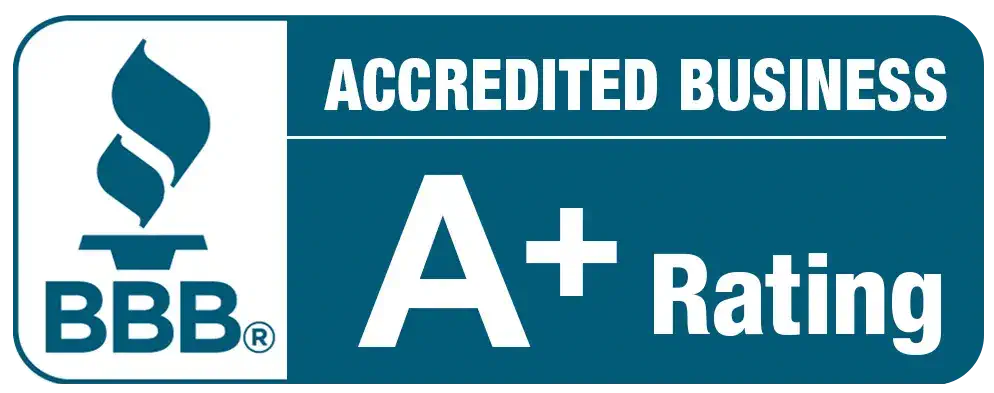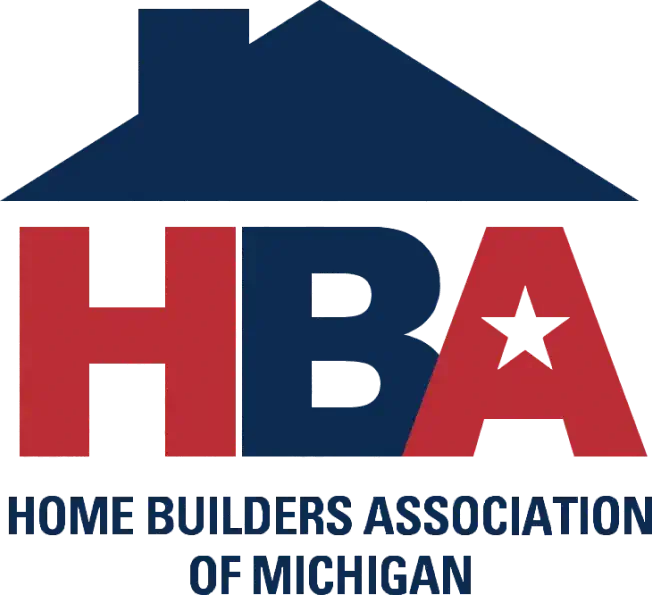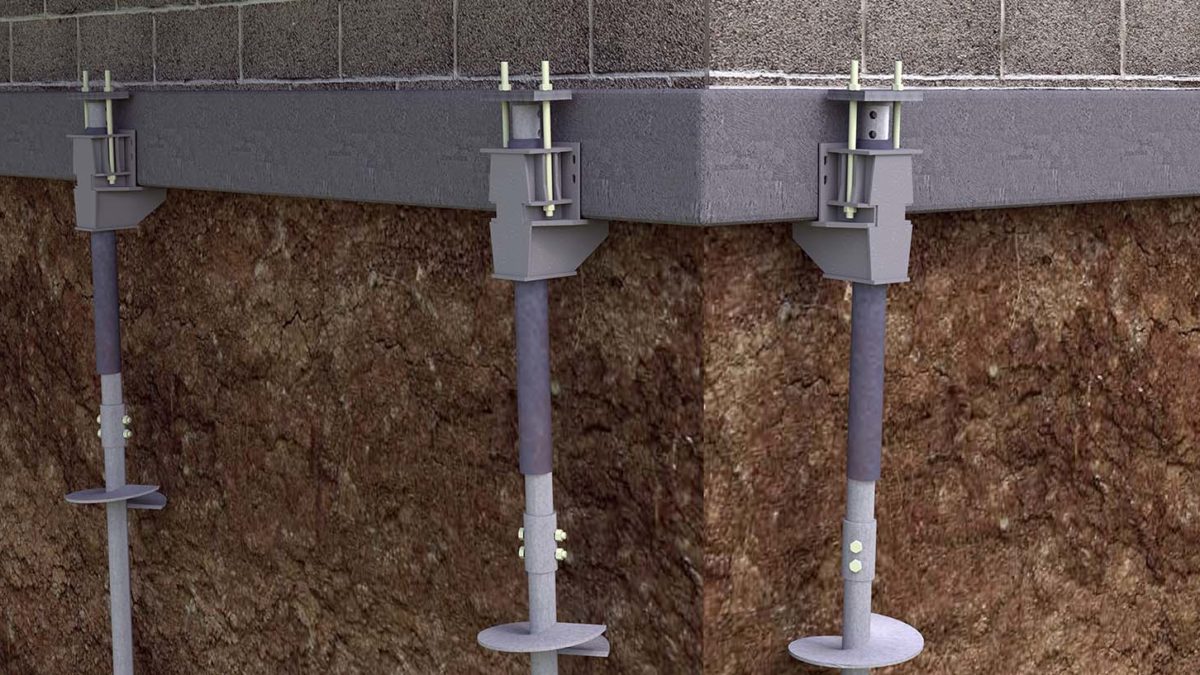Foundation repair is vital to maintaining structural integrity. If you’ve noticed a sinking or settlement in your foundation, pier installation may be the solution. However, selecting the right pier can be confusing. Several options are available on the market, but helical and push piers are the two most common types used for foundation repair.
When you hear the word “pier” when it comes to foundation work and repair, you might not think there are many differences between the types of piers out there other than what they may be made of. A pier essentially underpins an existing foundation by holding the weight of the foundation and transfers the stress of the load deeper into the soil to solid ground like bedrock. This re-established stability to the original foundation while also providing a long-term solution that resists the effects of soil shifts and erosion.
It is stronger and easier to install, but they have different uses and different installations. Despite providing a stronger foundation, their application and installation differ. This blog will dive deep into the differences between push and helical piers. We’ll discuss their installation processes, applications, and pros and cons. This blog lets you choose the best foundation repair and pier installation option.
All piers for foundation repair and stability solutions essentially provide this function. So what is the difference then between helical piers and push piers?
Let’s dive in!
What are Helical Piers?
Helical piers, or helical piles, are foundation systems used to support new buildings or provide additional support to existing ones suffering from structural issues. They are cylindrical steel pipes or rods that feature helical flights around their circumference, similar to the threads on a screw.
Helical piers work by being screwed into the ground until they reach a stable soil layer, also known as the “load-bearing stratum.” The weight of the building is then transferred to the pier and distributed evenly to the load-bearing stratum.
Advantages and Disadvantages of Using Helical Piers for Foundation Repair
Some pros of using helical pier installation for foundation repair include the following:
- Quick installation—Installation of helical piers is fast and with minimal excavation, resulting in less disruption to the site surroundings.
- Versatility—Depending on the soil and site conditions, helical piers can support new and existing structures.
- High load capacity—Helical piers can support significant building loads, making them suitable for projects of all sizes.
- Long-lasting—Due to their sturdy construction and high-quality materials, helical piers can last for decades without needing repair or replacement.
Some cons of using helical pier installation for foundation repair are:
- Cost—Helical piers can be more expensive than other foundation repair methods, especially when significant excavation is required.
- Limited depth—Helical piers may not be suitable for excessively soft soils or hard rock layers that are difficult to penetrate.
- Site accessibility—Due to limited space or challenging site conditions, helical piers require specific equipment for installation.
Types of Situations Where Helical Piers Would be an Appropriate Solution:
Helical piers are suitable for a broad range of foundation repair projects, including the following:
- Stabilizing sinking or settling foundations
- Providing additional support for building additions or heavy equipment
- Reinforcing shallow foundations or areas with poor soil conditions
- Building new structures on soil unsuitable for traditional foundation methods
What are Push Piers?
Push piers are a foundation repair solution to fix settling or sinking issues. These piers stabilize and lift a sinking foundation by attaching to its footings and then pushing it down until they reach more stable soil or bedrock.
Push piers are installed by first excavating soil around the foundation, exposing the foundation’s footings. Once the floors are exposed, brackets are attached to the foundation. Steel piers are driven through each frame and pushed into the ground using hydraulic pressure.
Once the push piers are in place and anchored, pressure is applied to each port until the foundation begins to lift. The push piers will continue to push into the ground until they reach stable soil or bedrock. At this point, the weight of the home is shifted from the unstable soil to the steel piers, stabilizing and lifting the foundation.
Advantages and Disadvantages of using push piers for foundation repair
Some pros of using push piers for foundation repair are as follows:
- Cost Effective—Push piers are a cost-effective foundation repair solution compared to other methods like helical pier installation.
- Long-Term Solution—Push piers are made of high-quality materials and offer long-term foundation repair.
- Minimal Disruption—Push pier installation is minimally invasive, requiring minimal excavation, and can be easily installed in tight spaces.
Some cons of using push piers installation for foundation repair are:
- Limited Use—Push piers are only effective at fixing foundation problems caused by soil settlement or sinking. Foundations damaged by lateral pressure or shifting soil conditions may not respond well to push piers.
- Weather Constraints—Push piers cannot be installed during extreme weather conditions like heavy rain, snow, or sub-zero temperatures.
- Installation Time—Push pier installation requires excavation and can be labor-intensive, potentially taking several days to complete.
Types of Situations Where Push Piers Would be an Appropriate Solution:
Foundation pushes piers are an excellent solution for a variety of foundation problems, including:
- Homes with settling or sinking foundations
- Cracks in the foundation walls
- Uneven or sloping floors
- Jammed doors or windows that won’t close
- Gaps between the foundation and the home
Comparison of Helical Piers and Push Piers
There are distinct differences between push and helical piers regarding the installation process, load-bearing capacity, cost, and versatility.
Installation Process
A hydraulic torque motor rotates helical piers into the ground until they reach a stable layer of soil or bedrock. A solid foundation for a structure is the result of this process. In contrast, push piers are driven into the ground using a hydraulic ram. The installation process for push piers is faster than for helical piers, as they require less drilling and excavation.
Load-Bearing Capacity
Thanks to their helix-shaped blades, helical piers are designed to support compression and tension loads. This support means they can bear heavier loads than push piers, which only handle compression loads. Therefore, helical piers are the best option for supporting large buildings and structures.
Cost
The cost of pier installation depends on several factors, such as the type of pier used, the severity of the foundation problem, and the property’s location. In general, helical piers are more expensive than push piers, and their installation requires specialized equipment and expertise.
Versatility
Due to their ability to support both compression and tension loads, helical piers are a more versatile solution for foundation repair. As well as slope stabilization, retaining walls, and new construction, they are useful in various soil types and conditions. However, push piers are better suited for smaller projects like homes and low-rise buildings.
The Big Difference
The big difference isn’t only that the helical pier is twisted or screwed into the ground compared to a push pier being pushed. It’s also that helical piers don’t have to rely on bedrock or significantly solid ground to perform the same job for light loads. The twisting action into the soil allows for better stability and load transference at a shallower depth than push piers can provide.
Helical piers are also functional stability solutions for compression loads like a foundation, but also lateral loads like a basement wall that’s bowing.
Lastly, the installation time for both push piers and helical piers is rather quick. It doesn’t take big equipment to drive or twist either type into place. That being said, because helical piers don’t rely on finding solid strata or bedrock for light loads, they provide immediate load-supporting capability. This means our Michigan foundation repair professionals at Bluebird CFW can install the helical piers quickly and efficiently, and they immediately start performing the work they designed and rated to do.
Choosing the Right Type of Piers for Your Foundation Repair
While both are effective solutions to foundation problems, certain factors make one type better suited for particular situations.
If you are considering helical piers vs. push piers for your foundation repair, consider the following:
Soil composition
The type of soil you have, and its condition can significantly influence the choice of piers. Helical piers are more suitable for softer soils, whereas push piers are better suited for harder soils.
Load requirements
The amount of weight the foundation needs to support is a crucial factor. Helical piers are ideal for lighter loads, such as residential buildings. Push piers can handle heavier loads, just like commercial and industrial buildings.
Installation process
The methods for installing helical and push piers differ. Helical piers involve drilling them into the ground, while push piers are driven into the soil using hydraulic pressure. This difference can affect the installation process, cost, and time required.
Depth of the foundation
The depth of the foundation is another critical factor to consider as it determines which type of pier is more effective. Helical piers typically go deeper than push piers, stabilizing deeper foundations more effectively.
Cost
The project’s cost is also an essential aspect to consider. Push piers are generally more affordable than helical piers. However, the cost can vary depending on site accessibility, soil type, load capacity, and the extent of damage to the foundation.
Which is better: Helical piers or Push piers?
Which is better: helical piers vs. push piers? The answer depends on the specific needs of your foundation. Helical piers are better in areas with expansive soils or where the ground is unlikely to shift significantly. Push-pier installation is better for lifting and stabilizing a settling foundation.
Remember: When considering foundation repair, consult a professional contractor.
By working with a professional, you can rest assured that your foundation will be stabilized and protected for years. You can enjoy a stable and secure home for years with the right foundation repair plan.
The Bluebird CFW Difference
As noted, helical piers don’t need to find load-bearing strata before they start providing stability support for light loads. That doesn’t mean that as soon as a helical pier is twisted into the ground the work is done. No, our experts ensure the helical piers we utilize are rotated to the right depth for the load they are providing stability for. Because helical piers are effective for both heavy and light loads, we only utilize helical piers to supply our customers with the highest quality of service.
The same goes for all of the repair work we do. We only use helical piers because they are so versatile and quick to install. Moreover, we leverage the control, easy readjusting while inserting and the stability that helical piers provide over push piers to give you the best results. Whatever process is used in order to strengthen your foundation, we always make sure the job is done right with first-time quality. Contact us today for a free inspection and estimate for your next foundation repair project.





